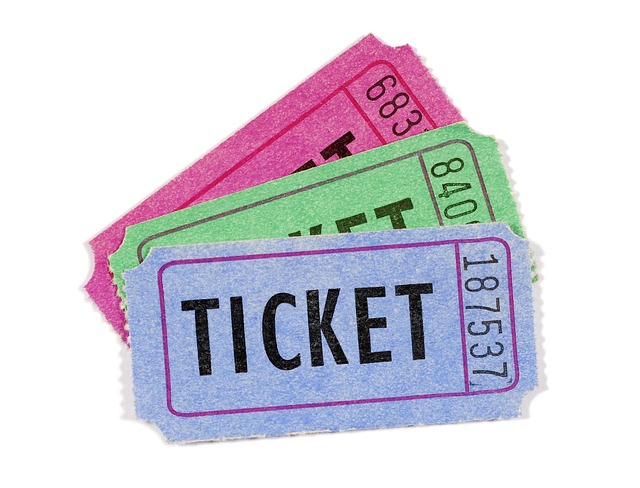Vignette Ticket FAQs: All Your Questions Answered
Traveling through Europe and beyond can offer breathtaking landscapes and rich cultural experiences, but it often comes with its own set of regulations and requirements. One such requirement is the vignette ticket, which is necessary for driving in certain countries. This article aims to answer all your questions regarding vignette tickets — from what they are, to how to obtain them, and more.
What is a Vignette Ticket?
A vignette ticket is a form of road usage charge that certain countries require for vehicles driving on their highways or main roads. Instead of a toll that you pay based on the distance traveled, a vignette is typically a sticker or an electronic record that proves you’ve paid a fee for a specific time period, often ranging from a week to a year.
Which Countries Require a Vignette?
Many countries in Europe require a vignette for their highways, including but not limited to:
- Austria
- Switzerland
- Czech Republic
- Slovakia
- Hungary
- Bulgaria
- Romania
It’s essential to check ahead of your travel plans as requirements can change, and additional countries may enforce vignette tickets.
How Do I Purchase a Vignette?
Purchasing a vignette can usually be done in several ways, depending on the country you are traveling to. Most countries allow you to buy a vignette:
- At gas stations near the border
- Online through official government websites
- At border crossings
When buying online, ensure that you are purchasing from official or trusted sources to avoid scams.
How Much Does a Vignette Cost?
The cost of a vignette varies by country and the duration for which it is valid. For example, a weekly vignette might cost less than a monthly or annual one. Here are some general price points for popular countries:
- Austria: Approximately €9.60 for a 10-day vignette
- Switzerland: Around CHF 40 for an annual vignette
- Czech Republic: Approximately CZK 310 for a 10-day vignette
Prices can fluctuate, so it’s advisable to verify the latest rates before purchase.
What Are the Vignette Regulations?
Each country has its own regulations regarding how and where you can display your vignette. Generally, you must affix the vignette to your vehicle in a visible location. Common rules include:
- The vignette must be placed on the windshield or bodywork as per local guidelines.
- Only one vehicle can be registered to a single vignette.
- Failure to display a valid vignette can result in significant fines.
It’s crucial to familiarize yourself with these regulations to avoid penalties during your travels.
What Happens If I Forget to Buy a Vignette?
Neglecting to purchase a vignette can lead to hefty fines. Enforcement officials frequently conduct checks on highways and main roads. If you’re caught without a vignette, you may be liable for an on-the-spot fine that can often exceed the price of a vignette significantly. In many countries, you’re also required to pay a fine if you’re caught using a highway without a valid vignette, even if it’s an accident or one-time occurrence.
Can I Get a Refund on My Vignette?
Refund policies for vignettes vary by country and the seller’s individual policies. Generally speaking, once purchased, vignettes are non-refundable. However, some exceptions may apply, especially if you did not use the vignette during its validity period. To ascertain specific policies, it’s best to check with the official administrative body of the country where you purchased it.
Are There Alternatives to Vignette Tickets?
In some countries, there are alternative systems to vignettes, such as pay-per-use or toll booth systems, where you pay based on the distance you’re traveling. These options tend to have their own unique pricing and regulations. Researching road usage options prior to your trip can help you decide the best choice for your travel plans.
Are Motorcycles and Trucks Subject to the Same Vignette Rules?
Yes, motorcycles and trucks are often subject to the same vignette rules as passenger vehicles. However, fees can differ based on the vehicle type, especially for larger vehicles like trucks or buses. Always check the specific regulations pertinent to your vehicle type when planning your journey.
What Should I Do If My Vignette is Damaged or Lost?
If your vignette is damaged, you may face difficulties when trying to prove you’ve paid the fees. In this scenario, the best course of action is to contact the agency or seller from whom you purchased the vignette. For lost vignettes, you may or may not be able to obtain a replacement, which typically depends on where and how you purchased it. Keeping your receipt should aid in this process, should you need to prove your purchase.
Can I Use a Single Vignette for Multiple Vehicles?
No. Vignettes are typically assigned to one vehicle and are not transferable. If you plan to use multiple vehicles in your travels, each will require its own vignette. Be sure to account for this in your travel budget.
Conclusion
A vignette ticket is a crucial element of compliance for many travelers driving through European highways. Understanding the rules, regulations, and purchasing processes can save you time, money, and hassle. Always stay informed, buy your vignette ahead of time if possible, and ensure that your vehicle is compliant before hitting the road.
Whether you’re embarking on a road trip across Austria’s scenic highways or cruising through Switzerland’s stunning landscapes, having your vignette sorted will allow you to enjoy your journey without the added stress of unexpected fines. Happy traveling!


